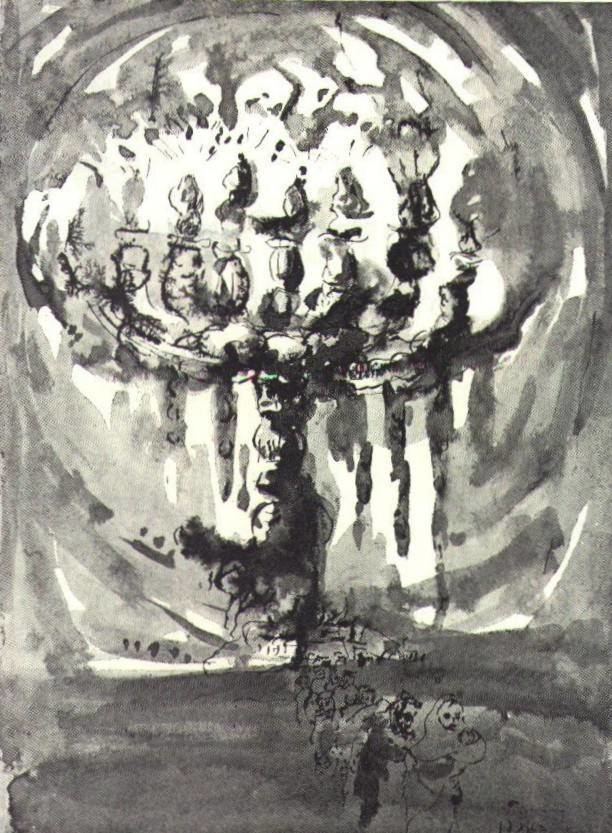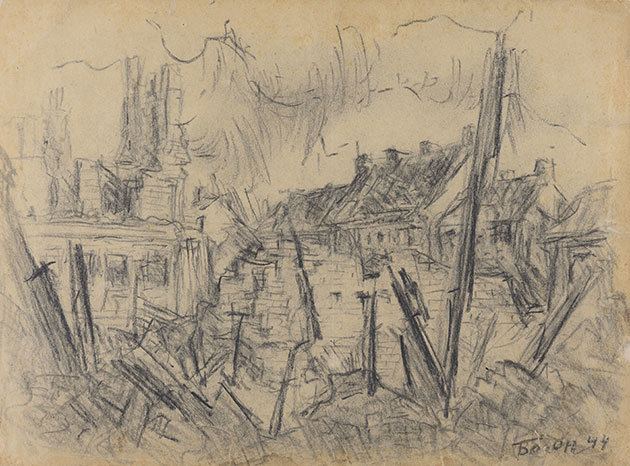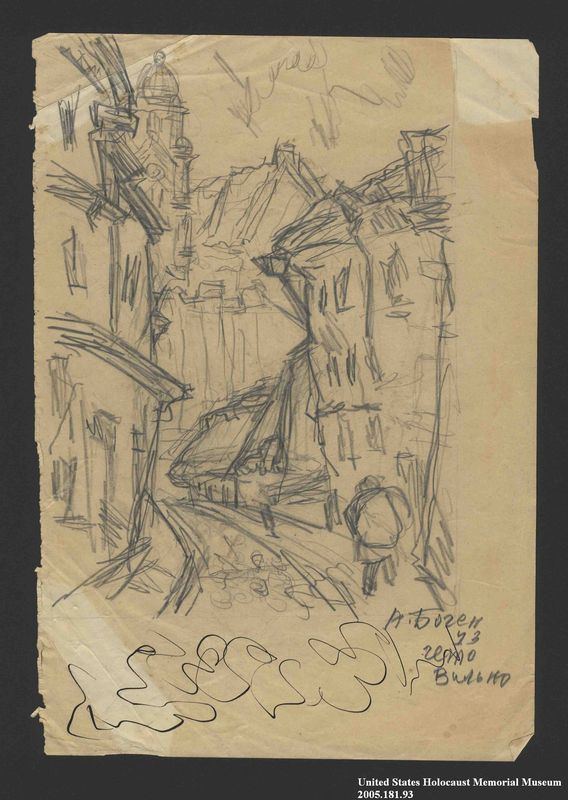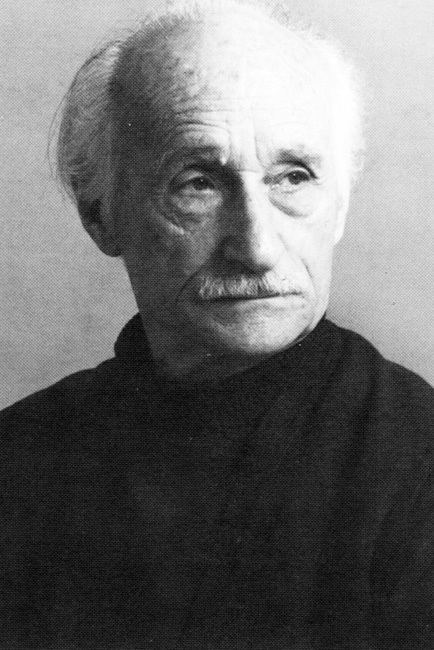Nationality Polish-Israeli Notable work Apocalipse | Name Alexander Bogen Role Artist | |
 | ||
Full Name Alexander Katzenbogen Known for Painting, Sculpture, Book Illustration and for being a partisan through the Holocaust Education Vilnius University, Academie des Beaux-Arts Movement Social realism, Lyrical abstraction, Abstract expressionism, Tachisme | ||
Alexander Bogen 亞歷山大·博根 (1916-2010) Lyrical Abstraction Polish
Alexander Bogen (Hebrew: אלכסנדר בוגן; born January 24, 1916 – October 20, 2010) was a Polish-Israeli artist, painter, sculptor, stage designer, book illustrator and a commander partisan during World War II.
Contents
- Alexander Bogen 1916 2010 Lyrical Abstraction Polish
- Biography
- Resistance through Art
- Selected Exhibitions
- Monuments Murals
- Awards
- References

Biography

Alexander Bogen was born in Tartu, Estonia and brought up in Wilno. As a young boy he adhered to the values of the Yiddish culture of Yung Vilne, as well as to the modern Polish culture. After completing his studies at the gymnasium, he was accepted to the Stefan Batory art academy affiliated with the Wilno University, where he studied painting and sculpture. His parents were physicians. His father came from a secular family and his mother was the daughter of Rabbi Tuvia Lobitzki, the rabbi of Wołkowysk, Poland. His studies were interrupted by World War II. Bogen joined the partisans and became a commander of the partisan unit in the Narocz Forests. He buried many of the drawings he made at this time near Lake Narocz. He returned to the ghetto in September 1943 and helped to facilitate the rescue of members of the United Partisan Organization (FPO), a Jewish underground movement active in the ghetto.

After the war Bogen returned to his studies, finished his academic degree and was mastered as an artist of monumental painting at the USB Academy of Art in Vilna. In 1947, he taught as a professor at The Academy of Fine Arts In Łódź and became a well-known artist, set designer and book illustrator.

In 1951, Bogen and his wife immigrated to Israel and settled in Tel Aviv.

During his time in Israel, Bogen continued his cultural and educational activities in the arts. In 1957 he initiated the art program in Ironi Yud-Dalet highschool in Tel Aviv and lead it for 22 years. Bogen completed his academic studies of art at the Ecole des Beaux Arts in Paris and was an art lecturer in the Hebrew University in Jerusalem. Bogen continued painting, drawing and sculpting until his death at the age of 94 in Tel Aviv on October 20, 2010.
Resistance through Art

Bogen continued to draw during the war, documenting what he saw: "We saw abandoned children. We saw people being led to the slaughter. I did not lay down my pencil for a moment. An artist condemned to death portraying people condemned to extermination...I sketched the forest, my brothers-in-arms, the battle itself. There was no table. There were no paints. There was no paper. I found packing paper. I burnt dry branches and prepared charcoal for my sketches. I asked myself why I was drawing, when I was fighting day and night… This is something similar to biological continuation. Every man, every people, is interested in continuing his people, his family, in bringing children into the world for the future – in leaving this one thing. Another motivation was to get information to the so-called free world……and to be creative in the situation of the Holocaust, this is also a protest... The artist reacts through his medium. This is his protest!... This is his weapon…This is what shows that the Germans could not break his spirit."
Selected Exhibitions


An exhibition of Bogen's work was held at the Hecht Museum in Haifa. His drawings, especially those that survived from his partisan days, offer a gallery of characters and document the history of a people fighting for its life during the Holocaust. Among the drawings on show were illustrations for poems by two Yiddish poets: Gebirtig and Abraham Sutzkever.
